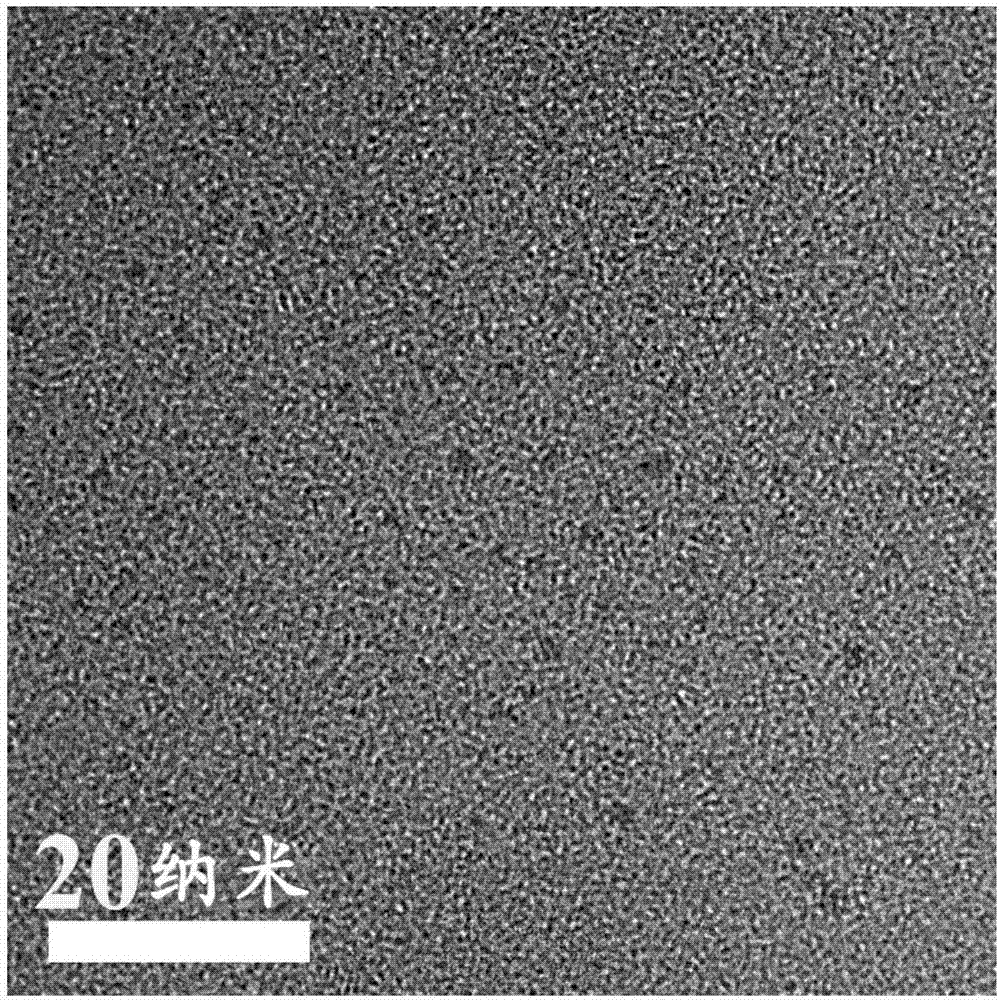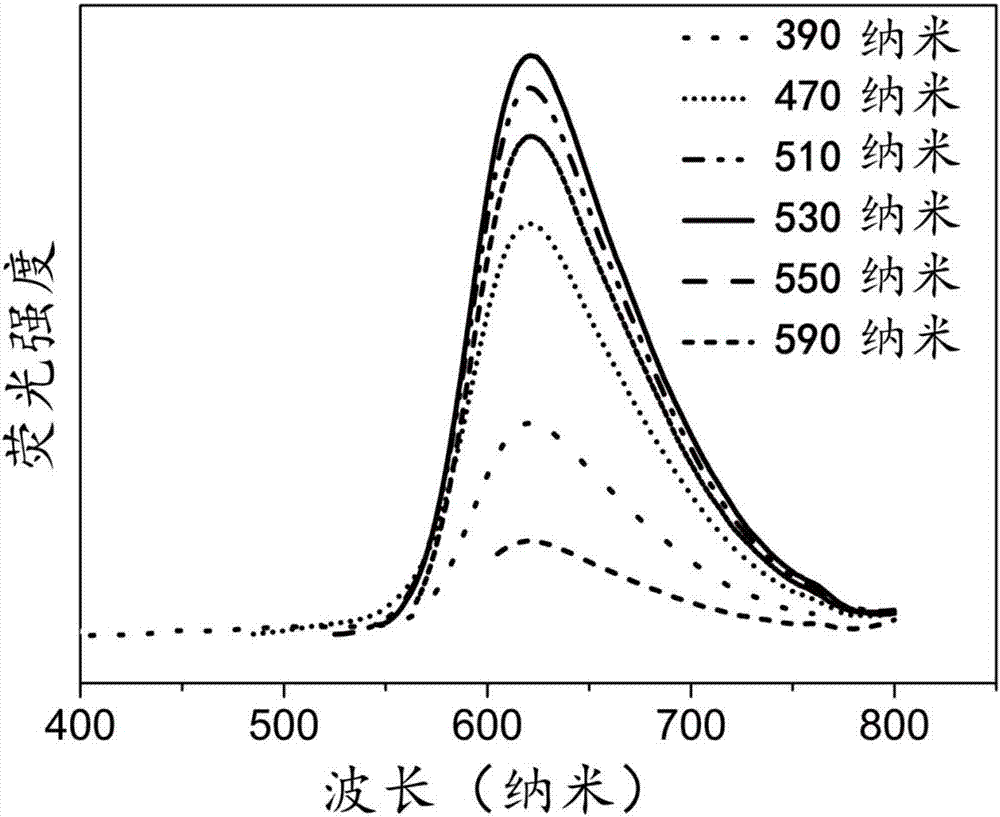Latent fingerprint detection method based on red fluorescent carbon dot material
A technology of red fluorescence and detection method, which is applied in the direction of luminescent materials, material analysis through optical means, and analysis of materials, etc., can solve the problem of damaging fingerprints and imprints, and achieve the effect of improving accuracy, suitable for popularization and application, and low equipment requirements
- Summary
- Abstract
- Description
- Claims
- Application Information
AI Technical Summary
Problems solved by technology
Method used
Image
Examples
Embodiment 1
[0024] (1) Preparation of red carbon dots:
[0025] Weigh 0.1 g of p-phenylenediamine and ultrasonically dissolve it in 40 ml of water, add 1 ml of concentrated phosphoric acid (85%), mix well, seal it in a polytetrafluoroethylene reactor, and heat the system to 180°C for 24 hours. After the system was cooled to room temperature, a clear solution was obtained by filtration. The clear solution was neutralized with sodium hydroxide to obtain a suspension, centrifuged to collect the bottom precipitate, and washed with ethanol and water several times. The washed sample was dissolved in 10 ml of dilute hydrochloric acid (0.1 mol / L), and then freeze-dried to obtain red light carbon dots;
[0026] (2) The red light carbon dot solution is applied to the display of latent fingerprints:
[0027] Dissolve 0.1 g of red light carbon dots in 100 ml of dilute hydrochloric acid (0.1 mol / L) to obtain a red light carbon dot solution. Pour 10ml of this red light carbon dot solution into a spr...
Embodiment 2
[0029] The preparation method is the same as that in Example 1, but the heating at 180°C for 24 hours in step (1) is changed to heating at 200°C for 20 hours, and other conditions remain unchanged. Dissolve 0.1 g of synthesized red carbon dots in 100 ml of dilute hydrochloric acid (0.1 mol / L), use the spray method to detect latent fingerprints on the surface of glass, metal, leather, plastic, ceramics, etc., and take pictures with a camera.
Embodiment 3
[0031] The preparation method is the same as in Example 1, but the amount of p-phenylenediamine used in step (1) is changed to 0.2 g, and other conditions remain unchanged. Dissolve 0.1 g of synthesized red carbon dots in 100 ml of dilute hydrochloric acid (0.1 mol / L), use the spray method to detect latent fingerprints on the surface of glass, metal, leather, plastic, ceramics, etc., and take pictures with a camera.
PUM
| Property | Measurement | Unit |
|---|---|---|
| diameter | aaaaa | aaaaa |
Abstract
Description
Claims
Application Information
 Login to View More
Login to View More - R&D
- Intellectual Property
- Life Sciences
- Materials
- Tech Scout
- Unparalleled Data Quality
- Higher Quality Content
- 60% Fewer Hallucinations
Browse by: Latest US Patents, China's latest patents, Technical Efficacy Thesaurus, Application Domain, Technology Topic, Popular Technical Reports.
© 2025 PatSnap. All rights reserved.Legal|Privacy policy|Modern Slavery Act Transparency Statement|Sitemap|About US| Contact US: help@patsnap.com



